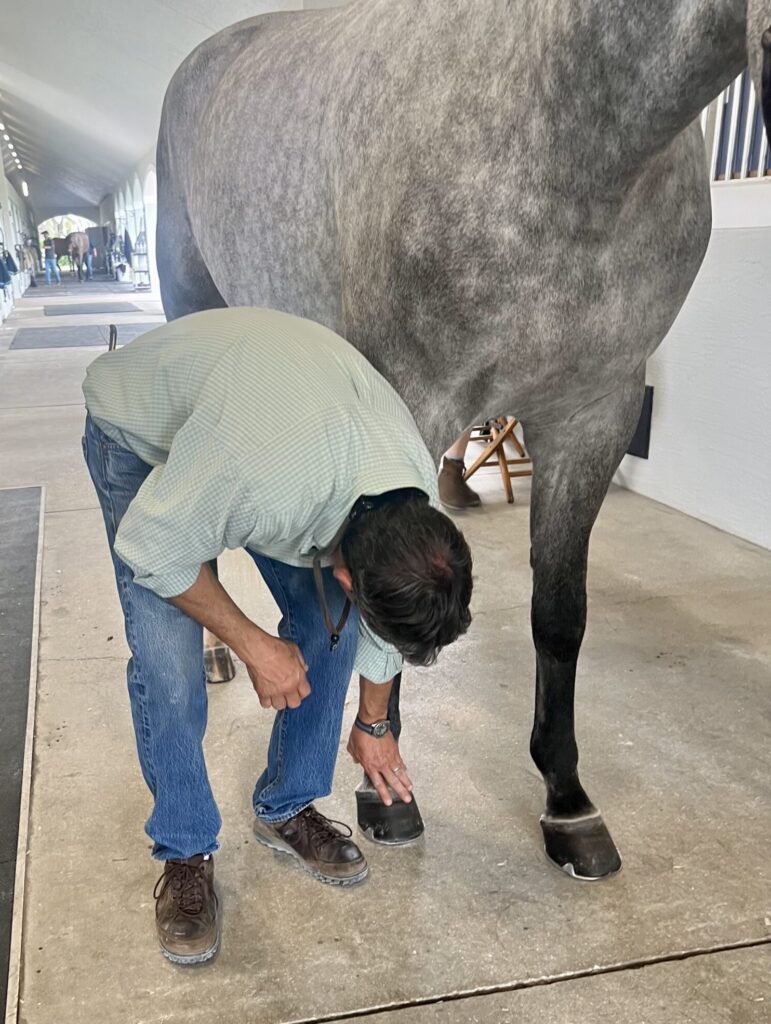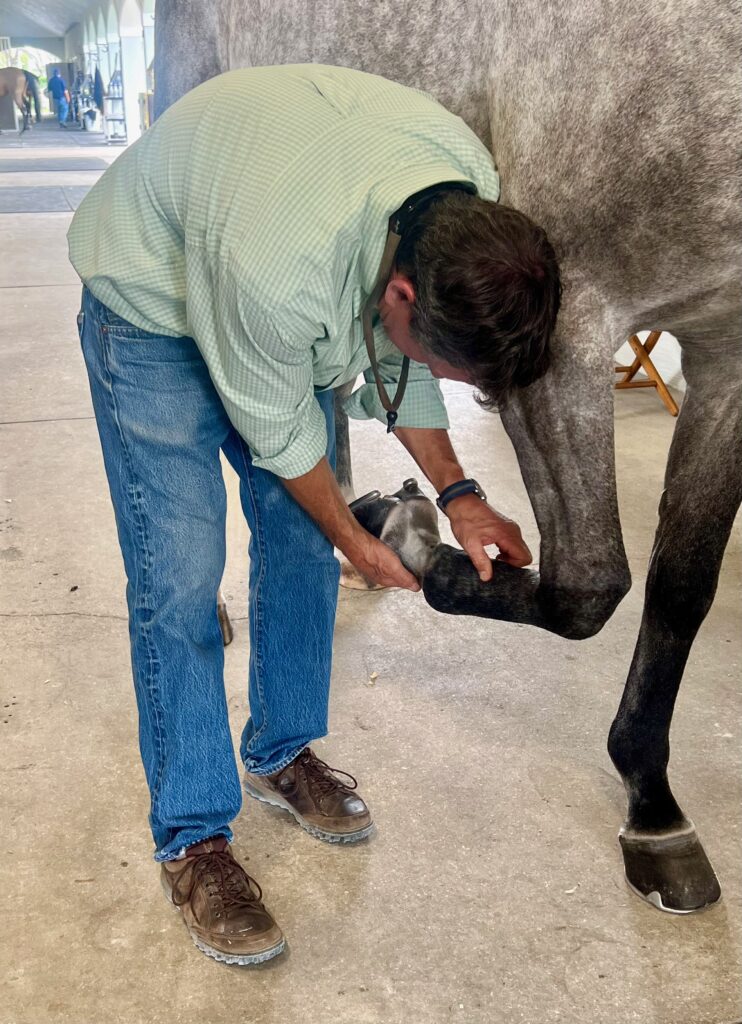Unfortunately, lameness issues in horses is a problem every horse owner, trainer, rider, and groom sooner or later has to deal with. Some will give their horse stable rest; others will turn him out in a field for a longer period of time. Most professional sport stables will have their veterinarian come out to do a lameness exam, though, and base their decision of treating or resting the horse on the outcome of that exam.
Following a certain order of tests (by palpation, flexions, and gait assessment), the veterinarian will try to find abnormalities and determine the cause of the lameness so he or she can give a diagnosis and a plan on how to move forward. Kit Miller, DVM, of Miller & Associates is a renowned equine veterinarian in the U.S. and exclusively for HorseGrooms he explains what goes into a lameness exam and what the different grades of lameness mean exactly.
What is Lameness?
“In the performance horse, lameness is a gait abnormality or irregularity usually caused by some pain or dysfunction in the horse’s limbs, neck or trunk. The pain or dysfunction can originate from multiple tissues or combinations of tissues, such as bone, tendons, ligaments or muscle and occasionally nerve tissue, and the goal of a lameness examination is to determine the precise cause of the horse’s unsoundness.”
The Lameness Exam
“The lameness exam is intended to identify and thoroughly evaluate the tissues that are responsible for a horse’s gait irregularity in order to understand if it is injured and needs a period of rest or can be safely treated and returned to athletic activity.”

The Horse’s History
“The examination should begin with the veterinarian obtaining the horse’s history: recent competitions or other athletic activity, any traumatic events such as a stumble or fall, and any prior injuries. Once the history has been discussed, the examination proceeds a visual examination of the horse to assess its conformation and to look for evidence of injury.”
Palpation
“The ‘hands-on’ portion of a lameness exam involves careful palpation of the horse’s limbs, neck, and back and an assessment of the gait by watching the horse in motion. The examination in motion can be done with the horse jogging in hand, under saddle, and occasionally in other circumstances such as in a harness.”



Additional Tests and Techniques
“The method of determining the source of lameness is highly specialized and varies greatly with different practitioners. Many examining veterinarians will use additional techniques such as flexion tests and diagnostic nerve blocks to help arrive at an answer.
Diagnostic imaging, such as x-ray, ultrasound and MRI are valuable in helping to evaluate the tissues responsible for a lameness and to assist in making an effective treatment plan.”
What Exactly Do You Look for when You Do a Lameness Exam?
“There are many symptoms of lameness. Head bobbing is present in more severe lamenesses. There are also slight lamenesses that may only be seen in certain circumstances, such as small circles or under saddle. More subtle symptoms also include poor or uncharacteristic performance and behavioral changes.”
Slight Lamenesses
“Slight lamenesses are often challenging to identify but can be very significant in a horse’s performance. Examples of a slight lameness are a shortened stride on one lead at the canter or a shift in a horse’s head and neck carriage when circling. While these conditions may not be easily viewed when the horse is trotting for a standard soundness evaluation, they can have an impact on the horse’s athletic success.”
The Importance of an Attentive Groom
“Often, a horse’s groom is the first to identify a problem since attentive grooms are the first to see subtle tissue swellings or changes in temperament. By drawing attention to these, a groom can help to prevent a more significant injury.”

“He Is 2 Out of 5 Lame.” What Does That Mean Exactly?
“The most commonly used lameness grading system ranges from 0 to 5.
- 0: no detectable lameness.
- 1: a difficult to detect lameness that is not always visible (i.e. only observed in certain circumstances.)
- 2: a lameness that is more consistently apparent.
- 3: a lameness that is visible at the trot under all circumstances (straight lines and circles).
- 4: a lameness that is visible at the walk.
- 5: a non weight bearing lameness.
Any decision regarding continued training or athletic activity requires a clear understanding of the origin of the gait irregularity and should be made with the best interest of the horse in mind.”
The Importance of a Good Blacksmith
“It is of critical importance to have a good and reliable blacksmith. It has been my experience that the long-term soundness of many horses is strongly related to having consistent, good hoof care.”


